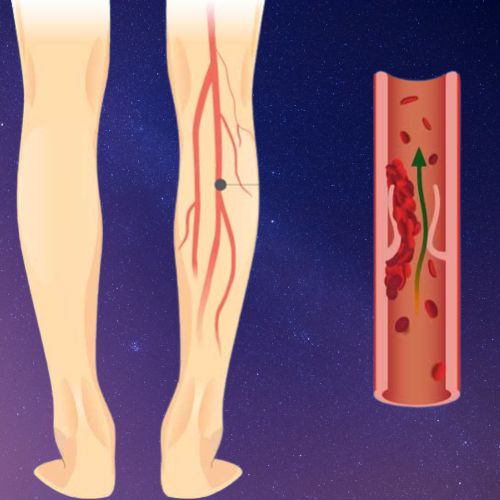Table of Contents
Virchow’s Triad

Virchow’s Triad is a fundamental concept in medicine, shedding light on the factors that contribute to thrombosis, which is the formation of blood clots in blood vessels. Named after the 19th-century German physician Rudolf Virchow, this triad identifies the three key elements that increase the risk of thrombosis: stasis of blood flow, endothelial injury, and hypercoagulability. In this article, we’ll delve into the details of Virchow’s Triad, its theory, practical examples, causes, symptoms, nursing responsibilities, clinical markers, and its connection with papilledema.
The Components of Virchow’s Triad
2.1. Stasis of Blood Flow
One of the components of Virchow’s Triad is the stasis of blood flow. This refers to the slowing or stagnation of blood circulation within the blood vessels. When blood flow becomes sluggish, it increases the chances of clot formation. Conditions like varicose veins and heart failure can contribute to stasis.
2.2. Endothelial Injury
Endothelial injury is another critical factor. The endothelium is the inner lining of blood vessels, and any damage to this layer can trigger clotting. Conditions such as atherosclerosis, which cause damage to the arterial walls, can lead to endothelial injury.
2.3. Hypercoagulability
Hypercoagulability refers to the tendency of the blood to clot more easily than usual. Certain medical conditions, such as inherited clotting disorders, and lifestyle factors like smoking or obesity, can result in hypercoagulability.
Virchow’s Triad Theory
Virchow’s Triad theory is central to understanding the pathophysiology of thrombosis. It asserts that the presence of all three elements—stasis of blood flow, endothelial injury, and hypercoagulability—greatly increases the risk of developing blood clots.
Examples of Virchow’s Triad
4.1. Deep Vein Thrombosis (DVT)
One common example of thrombosis influenced by Virchow’s Triad is deep vein thrombosis (DVT). This condition involves the formation of blood clots in deep veins, often in the legs, due to slowed blood flow, injury to the vessel wall, and hypercoagulability.
4.2. Pulmonary Embolism
Pulmonary embolism can occur when a blood clot, often from DVT, travels to the lungs. This is a life-threatening condition associated with Virchow’s Triad.
4.3. Atrial Fibrillation
Atrial fibrillation, an irregular heartbeat, can result in stasis of blood flow within the atria, contributing to clot formation in the heart.
Causes of Virchow’s Triad
5.1. Medical Conditions
Various medical conditions, such as cancer, pregnancy, and inflammatory disorders, can predispose individuals to Virchow’s Triad.
5.2. Lifestyle Factors
Unhealthy lifestyle choices like smoking, obesity, and prolonged immobility can also increase the risk of thrombosis.
Symptoms Related to Virchow’s Triad
The symptoms of thrombosis can vary depending on the location of the blood clot. Common signs include pain, swelling, redness, and warmth at the site of the clot. If a clot dislodges and travels, it can lead to more severe symptoms such as shortness of breath and chest pain.
Nursing Responsibilities
7.1. Preventative Measures
Nurses play a crucial role in preventing thrombosis by implementing measures like compression stockings, early ambulation, and administering anticoagulant medications.
7.2. Patient Education
Nurses educate patients about the importance of mobility, maintaining a healthy lifestyle, and adhering to prescribed medications to reduce the risk of thrombosis.
Virchow’s Triad and Clinical Markers
8.1. Troponin and Virchow’s Triad
Troponin is a marker used to assess heart muscle damage, but its levels can also be elevated in the presence of clot-related conditions.
Troponin I levels are less than 0.03 ng/mL, while Troponin T levels are less than 0.2 ng/mL.
8.2. B-type Natriuretic Peptide (BNP) and Virchow’s Triad
BNP is a marker for heart failure, but it can also be influenced by the processes associated with Virchow’s Triad.
A typical reference range for normal BNP levels is below 100 picograms per milliliter (pg/mL) for individuals without heart failure.
The Relationship Between Virchow’s Triad and Papilledema
Although not widely discussed, there is emerging research on the potential link between Virchow’s Triad and papilledema, a condition characterized by swelling of the optic nerve head. The exact nature of this connection is still being explored by medical professionals.
Conclusion
Understanding Virchow’s Triad is vital for healthcare professionals in managing and preventing thrombotic events. By addressing the components of this triad, we can reduce the risk of blood clot formation and its associated complications.
FAQs
1. How does obesity contribute to Virchow’s Triad?
Obesity can lead to hypercoagulability, one of the key components of Virchow’s Triad. It increases the risk of blood clot formation due to changes in blood composition.
2. Are there any natural ways to prevent Virchow’s Triad?
Maintaining an active lifestyle, staying hydrated, and consuming a healthy diet can help reduce the risk of thrombosis associated with Virchow’s Triad.
3. Can Virchow’s Triad be hereditary?
While some clotting disorders are hereditary, the components of Virchow’s Triad can also be influenced by genetic factors
You May Also Like
Know More About Beck’s Triad: Click Here